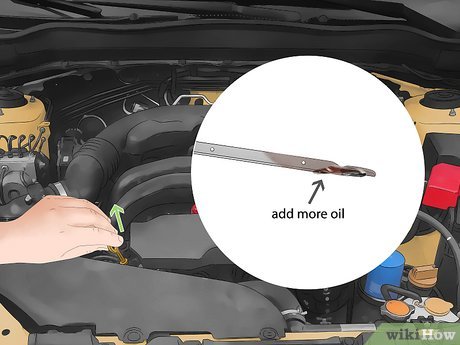How to Look at a Car Engine
What to Look For
- Oil level: The oil level should be between the “full” and “low” marks on the dipstick.
- Oil color: The oil should be a light brown or amber color. If it is black or very dark, it may need to be changed.
- Coolant level: The coolant level should be between the “full” and “low” marks in the reservoir.
- Coolant color: The coolant should be green, orange, or pink. If it is brown or rusty, it may need to be flushed and replaced.
- Battery: The battery should be clean and free of corrosion. The terminals should be tight and the cables should be in good condition.
- Air filter: The air filter should be clean and free of debris. A dirty air filter can restrict airflow to the engine, which can reduce performance and fuel economy.
- Spark plugs: The spark plugs should be clean and free of corrosion. Worn or damaged spark plugs can cause misfires and reduce engine performance.
- Ignition wires: The ignition wires should be in good condition and free of cracks or damage. Damaged ignition wires can cause misfires and reduce engine performance.
- Drive belts: The drive belts should be tight and free of cracks or damage. Worn or damaged drive belts can slip, which can reduce power to the accessories and cause them to fail.
- Hoses: The hoses should be in good condition and free of leaks. Leaking hoses can cause the engine to overheat or lose power.
How to Check the Oil Level
1. Park the car on a level surface.
2. Turn off the engine and wait a few minutes for the oil to settle.
3. Locate the dipstick, usually located near the front of the engine.
4. Pull out the dipstick and wipe it clean with a rag.
5. Reinsert the dipstick and pull it out again.
6. Check the oil level on the dipstick. The oil level should be between the “full” and “low” marks.
7. Add oil if necessary.
How to Check the Coolant Level
1. Park the car on a level surface.
2. Allow the engine to cool completely.
3. Locate the coolant reservoir, usually located near the top of the engine.
4. Check the coolant level in the reservoir. The coolant level should be between the “full” and “low” marks.
5. Add coolant if necessary.
How to Inspect the Battery
1. Park the car on a level surface.
2. Turn off the engine.
3. Open the hood and locate the battery.
4. Check the battery for corrosion. If there is any corrosion, clean it off with a wire brush.
5. Tighten the battery terminals if they are loose.
6. Check the battery cables for damage. If there is any damage, replace the cables.
How to Inspect the Air Filter
1. Park the car on a level surface.
2. Turn off the engine.
3. Open the hood and locate the air filter housing.
4. Unclip the air filter housing and remove the air filter.
5. Inspect the air filter for dirt and debris. If the air filter is dirty, replace it with a new one.
How to Inspect the Spark Plugs
1. Park the car on a level surface.
2. Turn off the engine.
3. Open the hood and locate the spark plugs.
4. Remove the spark plugs using a spark plug wrench.
5. Inspect the spark plugs for wear or damage. If the spark plugs are worn or damaged, replace them with new ones.
How to Inspect the Ignition Wires
1. Park the car on a level surface.
2. Turn off the engine.
3. Open the hood and locate the ignition wires.
4. Inspect the ignition wires for cracks or damage. If the ignition wires are cracked or damaged, replace them with new ones.
How to Inspect the Drive Belts
1. Park the car on a level surface.
2. Turn off the engine.
3. Open the hood and locate the drive belts.
4. Inspect the drive belts for cracks or damage. If the drive belts are cracked or damaged, replace them with new ones.
How to Inspect the Hoses
1. Park the car on a level surface.
2. Turn off the engine.
3. Open the hood and locate the hoses.
4. Inspect the hoses for leaks or damage. If there are any leaks or damage, replace the hoses with new ones.
By following these tips, you can learn how to look at a car engine and identify potential problems. This can help you avoid costly repairs and keep your car running smoothly.





